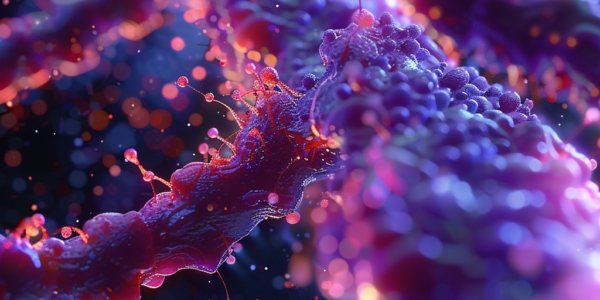The Search for the Origin of Life on Earth
The search for the origin of life on Earth has captivated scientists for years. With various theories and hypotheses, researchers are exploring how life could have emerged on a hot and rocky planet like Earth. One popular theory involves the early Earth’s atmosphere, dominated by nitrogen and methane, which could efficiently produce organic compounds. The famous Miller-Urey experiment simulated these conditions and yielded astonishing results, suggesting that lightning, asteroid impacts, and ultraviolet radiation from the Sun could have combined to create the necessary chemicals for life.
Study Finds Micro- and Nanoplastics Passed on During Cell Division
A recent study reveals that micro- and nanoplastic particles persist in the human body and are transmitted to newly formed cells during division, potentially enhancing tumor metastasis. The findings, published in ‘Chemospheres’, highlight the effects of plastic particles on cancer cells in the gastrointestinal tract.
Advancements in In Vivo Gene Editing for CRISPR-Based Therapies
Explore the latest advancements in CRISPR gene editing technology, including in vivo delivery of gene-editing therapies and improved manufacturing to reduce the cost of treatments. Learn about the innovative methods being developed by Nobel Laureate Jennifer Doudna and her team at the Innovative Genomics Institute to target specific cells within the body for more accessible and affordable CRISPR-based therapies.
The Complexity of the Sense of Touch: Insights from Recent Study
Our bodies are equipped with an intricate sensory system that allows us to perceive the world around us. The sense of touch encompasses a combination of different sensations working in unison, as a recent study published in Science sheds light on the molecule responsible for detecting gentle touch. Understanding the mechanisms behind gentle touch sensation not only provides insights into our sensory abilities but also holds potential implications for various fields, including neurobiology and medical research.
Novel Approach to Targeted Protein Degradation Unveiled in Recent Study
Discover the groundbreaking study in Nature introducing a novel approach to targeted protein degradation through intramolecular bivalent glues (IBGs). The research, led by Oliver Hsia and Matthias Hinterndorfer, unveils the mechanism of action of IBGs and their potential to enhance surface complementarity with E3 ligases for productive ubiquitination and degradation. This advancement could revolutionize drug development and lead to the creation of more effective targeted protein degraders with broad therapeutic applications.
New Approach to Regenerative Therapy for Heart Failure
Groundbreaking research from Hokkaido University reveals a new approach to regenerative therapy for heart failure. Activating the mitochondria of regenerative cells prior to treatment significantly enhances the effectiveness of cell transplantation therapy for heart healing. The study, led by Professor Yuma Yamada, demonstrates the potential of this innovative approach to improve cardiac function and suppress myocardial fibrosis.
Discovery of Male Fertility Gene
Scientists have discovered a male fertility gene, SPOCD1, that works in partnership with the C19orf84 gene to protect early-stage precursors to sperm cells from damage. Understanding how these genes work together could explain the basis of severe cases of male infertility. The findings, published in Molecular Cell, shed light on the genetic causes of conditions like cryptozoospermia and azoospermia, which affect around one percent of men.
Groundbreaking Discovery in Energy Guidance Within Cells
Groundbreaking research at the University of Gothenburg reveals how proteins undergo structural changes to efficiently guide energy within cells, potentially leading to the development of more efficient solar cells in the future. The study, published in Nature Chemistry, provides valuable insights into the intricate mechanisms of energy guidance within cells and offers potential applications in solar panels, batteries, and other energy transport technologies.
Beef-Infused Rice: A New Food Innovation
South Korean researchers have developed hybrid rice grown in a lab with cow muscle and fat cells inside the rice grains. The beef rice is touted as a cheaper, more environmentally sustainable source of protein with a much lower carbon footprint than beef. The rice is firmer and more brittle than regular rice, and is higher in protein and fat.
Groundbreaking Study Identifies the Impact of Radiation on Human Cells
A groundbreaking study led by a Korean research team has revealed the mutational impact of radiation on human and animal cells, providing valuable insights into the precise patterns of mutations induced by radiation. The research, published in the academic journal Cell Genomics, has established the impact of radiation on cells at the molecular level, paving the way for safer and more efficient radiation therapy.










